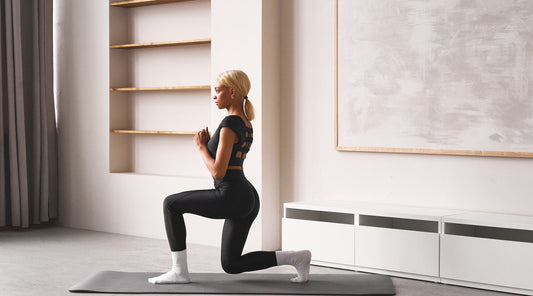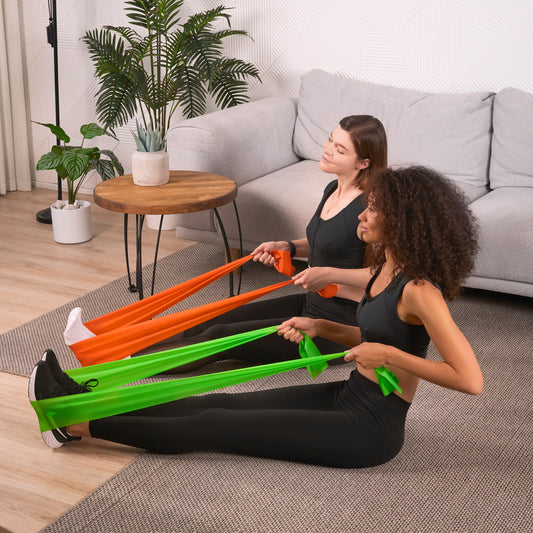Walking upright is part of human nature. People are exceptionally created to walk and run on two legs due to a bend in the lower backbone, specially shaped pelvis and thigh bones, and an erect head on the spine.
However, many individuals think your posture hurts you unless it meets strict guidelines. This false belief is one of the common myths about posture and pain that can hinder mobility, physical comfort, and even your ability to heal from pain.
Striving to get better posture is a wonderful thing. However, the wrong misconception can affect your efforts to get better. Let’s learn more and explore the popular 7 myths about bad posture.
Our posture greatly influences our general health and well-being. It goes beyond simply standing up. Another goal is to prevent chronic pain, especially in the shoulders, neck, and back.
These and other body parts are included in posture; thus, proper and bad posture can impact how the body feels and works. Confusion can arise from several posture misconceptions, though. People who are confused about their posture may make mistakes that result in or worsen pain.
Before diving into enduring poor posture, it is critical to research common false beliefs about posture.
The Biggest Myths About Posture—Debunked
We've all heard the proverb from wellness experts, educators, and parents: "Sit up straight!" "Don't slouch!" "Stand tall!". However, how much of these pieces of wisdom is the truth? Not all posture instruction is made equal.
A proper understanding of bad and good posture leads to preventing typical mistakes and enhancing general health. We will observe 7 myths about bad posture dispelled to help you build the best strategy for posture correction.
Myth 1: There Is One Perfect Posture for Everyone
The assumption that everyone should aim for the same posture—shoulders back, chest out, and spine straight—is widely held. It's common to describe the pursuit of ideal posture as a universal objective that can be attained with discipline and pure effort.
Reality: Since everyone is different in structure, tissue composition, and natural mobility, proper posture mostly depends on how comfortable and at ease each person feels in any given position and how long that lasts.
You have discovered the sweet spot for your body when sitting or standing comfortably. There may be more harm than good when you try to conform your posture to someone else's ideals.
Instead, one crucial strategy to prevent pain is to adopt a comfortably balanced posture that does not put undue strain on any particular muscles or joints. However, if you remain in that position for an extended period, it will cause pain. It is a fact that maintaining proper posture requires regularity.
Myth 2: Bad Posture Always Leads to Back and Neck Pain
One of the bad posture myths is the idea that poor posture is always responsible for discomfort and pain in the back and neck, which is provided by the following situations:
- People who work on phones tilt their heads in an abnormal posture, which can cause shoulder or neck pain.
- Shoulder soreness results from spending a lot of time slumped over a computer.
- Back pain is a result of standing all day at work.
Reality: In comparable circumstances, some people will feel pain from their posture, while others won't. Posture is not the only factor contributing to pain.
The strength and quality of your tissues play a role in determining how much strain or exercise you can handle before your pain system signals that it's time to modify your activities.
A person in good health, physically active, and at ease can endure most positions for longer than someone with a musculoskeletal ailment or chronic stress. Even though you don't have improper posture, putting more strain on yourself than you can handle will hurt.
You can find additional and helpful clarification about the causes of back and neck pain here.
Myth 3: Sitting Up Straight All the Time Is Best for Your Spine
Sitting upright at all times is one of the most widely accepted posture myths. Keeping the spine neutral can indeed help avoid strain and discomfort, but standing up straight all the time isn't always the answer.
Reality: The most crucial thing when it comes to sitting is to stay comfortable. This does not imply that you can spend your days sprawled out on your bed instead of sitting at your desk, but it also means that you shouldn't feel limited to one inflexible position.
Although you should avoid slouching or hunching your shoulders, comfort matters most. Deepen your knowledge about the best posture for sitting here.
Myth 4: Standing Desks Automatically Fix Bad Posture
Standing desks are becoming increasingly popular as a solution to extended sitting. Although they have advantages like cutting down on sitting time, they are not a universally applicable solution for fixing bad posture.
Reality: Standing desks have drawbacks, such as putting more strain on the lower limbs and perhaps causing hip, knee, and foot pain. Additionally, they don't alter the typical posture of bending toward the screen, which puts more strain on the back side of the body.
It's essential to switch between sitting and standing throughout the day, pay attention to your body's signals, and keep your sense of support from the ground up to your bones.
Learn more about how a posture correcting bra helps maintain a posture-friendly workplace during the day by clicking the following link.
Myth 5: Posture Is Only About How You Sit and Stand
This is one of the next myths about posture. This misconception comes from the belief that having a straight back while sitting or standing is the only component of proper posture.
Reality: Posture refers to the alignment of your body during various tasks, including lifting, sleeping, walking, and even carrying a bag. Everyday motions can cause bad posture, such as slouching when walking or sleeping with your spine out of alignment.
For long-term health and to avoid strain, your body must be properly positioned in all positions. If you solely concentrate on sitting or standing, you may miss habits that cause discomfort and muscular imbalances in other contexts.
Myth 6: Posture Correctors Are the Ultimate Fix for Bad Posture
According to the notion that posture correctors are the best way to address poor posture, all it takes is to put on a brace or other device.
Reality: Although they might remind you to maintain proper posture and offer temporary support, posture correctors don't treat the underlying issues that lead to bad posture, such as imbalances or weak muscles.
If you just use a posture corrector, you may become dependent on it, weakening the muscles that naturally support your posture. For long-lasting transformation, it is more effective to strengthen your core, shoulders, and back muscles in addition to enhancing your general posture habits.
However, an excellent posture bra in the wardrobe is highly recommended if you are struggling with poor posture. Etalon is the helpful friend that accomplishes your look, playing an integral part in posture correction.
Read more about efficient and handy posture correctors here.
Myth 7: Poor Posture Is Permanent and Can’t Be Changed
The misconception that improper posture is irreversible arises from the idea that negative habits cannot be broken once established. The “evidence” of this false belief is clear, but let’s spread the light on the truth.
Reality: Despite the possibility that years of bad posture have caused discomfort and muscular imbalances, posture may undoubtedly be improved with constant effort. You can make remarkable gains by strengthening your core, shoulders, and back muscles, as well as by stretching frequently and keeping up healthy routines.
It takes time, but your body can realign and perform better with the correct technique. Therefore, poor posture can be fixed; it is not permanent. Dive into detailed science about proper posture, exploring the tips for improving it.
How to Maintain Healthy Posture Without Falling for Myths
- Focus on building stronger muscles in your shoulders, back, and core to maintain good posture without succumbing to popular misconceptions.
- Incorporate stretching to release stress and maintain proper posture throughout the day, not just when standing or sitting.
- Relying on short-term solutions, such as posture correctors, is not the way to achieve lasting progress.
- Be aware of your posture when walking, lifting, and sleeping, and adapt your workspace for better ergonomics.
Building long-lasting sustainable habits can be achieved by treating posture comprehensively.
Conclusion
The key to good posture is balance, movement, and support rather than strict guidelines. Remember that what suits one person might not suit another and that the ideal posture is frequently the one that follows—keep moving! Spend time learning about your body's requirements and limitations rather than mindlessly adhering to generic prescriptions.
FAQs
What is the biggest myth about posture?
Can bad posture really cause pain?
Is there such a thing as a perfect posture?
Do posture correctors actually work?
Are standing desks better than sitting?
Trending
Try Etalon posture improvement products










